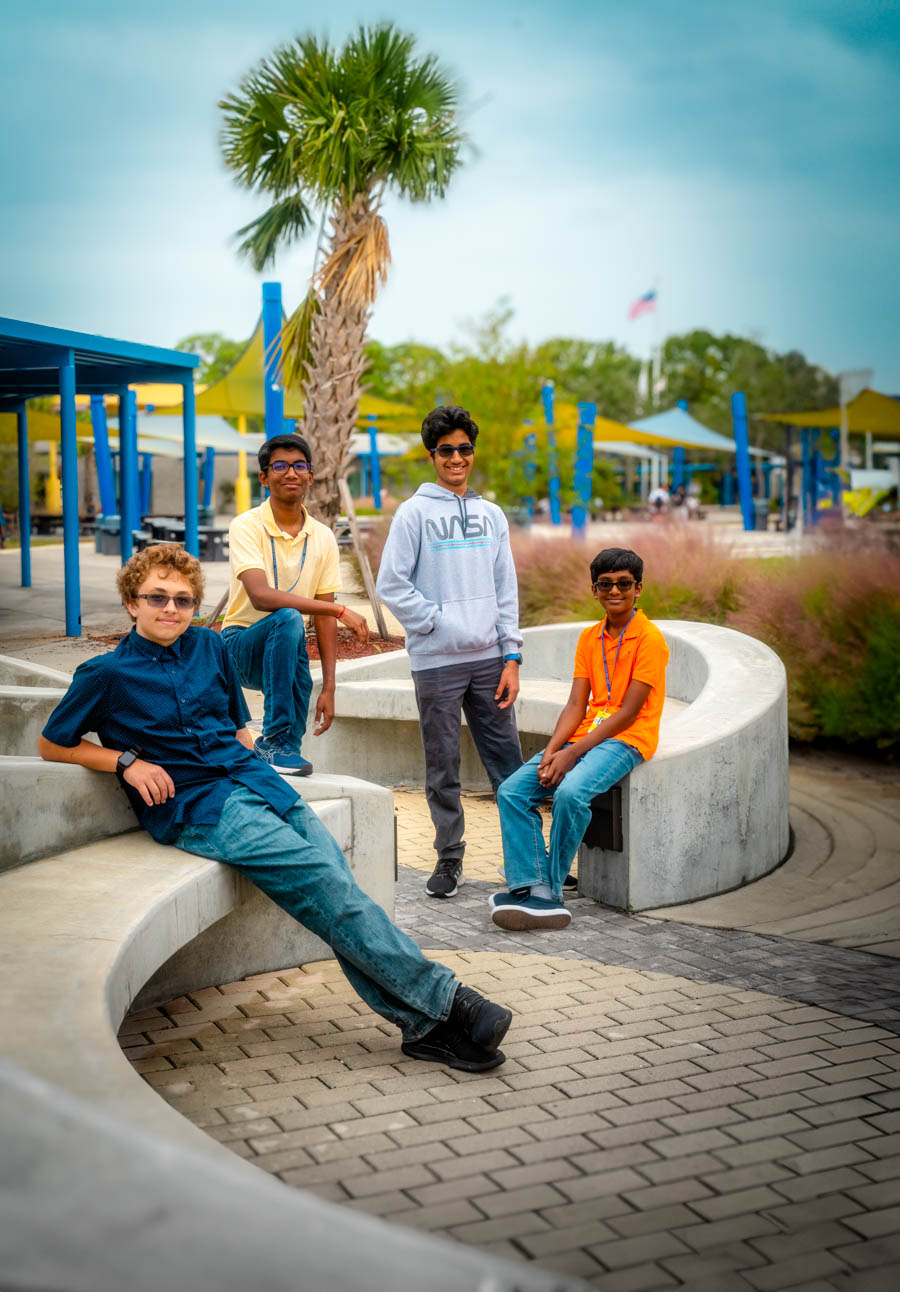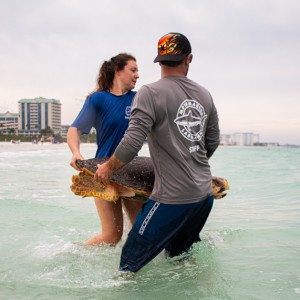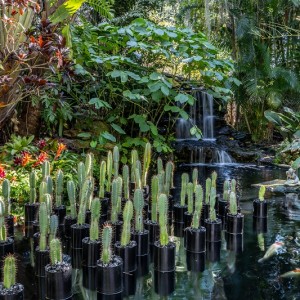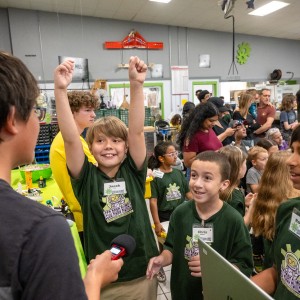Four Pine View School students shot for the stars and landed on the International Space Station (ISS). Through the Student Spaceflight Experiment Program (SSEP), the eighth-graders designed a unique research project, achieving the honor of sending the experiment on SSEP Mission 17 to the ISS aboard the SpaceX Falcon 9 that launched in November. The journey started in September 2022 for Rugan Suresh, Felix Ratner, Rishik Yellu and Yatharth Kakkad. While some students at Pine View participated during class for a grade, the teammates participated for no credit, simply out of inherent curiosity and passion for science. The boys were friends before deciding to work together on the experiment, but the year-long endeavor brought them even closer through teamwork and collaboration.
“Seeing something that our team has spent so much time on, collaborating with the various researchers and professors that made the entire project possible, was truly a moment I can state as a highlight of my life,” shares Kakkad. SSEP is a nonprofit created in 2013 by the National Center for Earth and Space Science Education that gives students from fifth grade through college the chance to create an experiment that will be executed in microgravity by astronauts. It begins with students submitting an experiment proposal to their community’s committee, which could be a whole county or town, or individual schools like Pine View, which had around 350 students participating. SSEP Mission 17 received 2,261 submitted proposals and 12,859 participating students in the competition. The selected experiments came from students across the nation and overseas, with one from students in Canada and another from Ukraine.
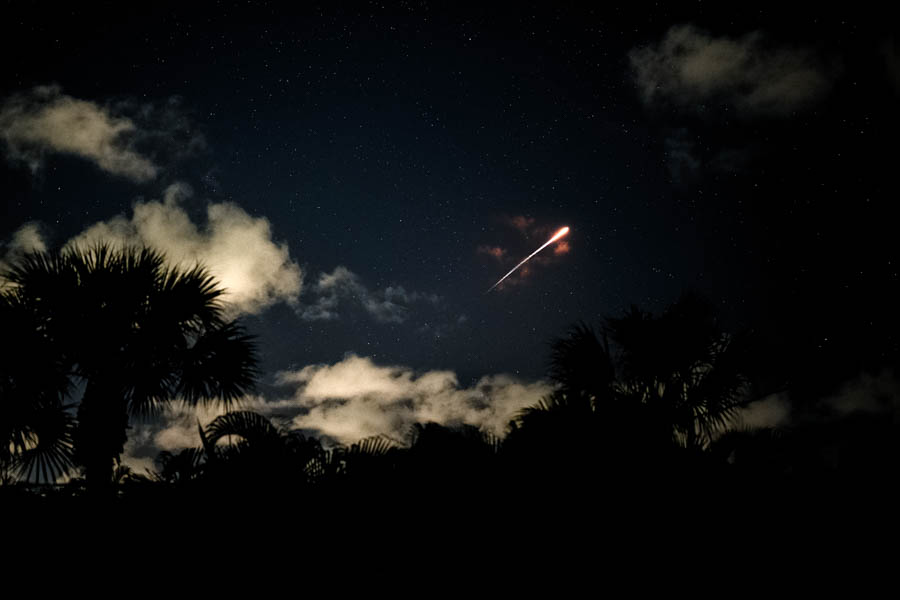
The group’s experiment tests the effect of microgravity on microalga Chlorella vulgaris and its ability to remove nitrogen and phosphorus from wastewater. The team chose this specific topic because microalga water purification systems could one day make a pivotal contribution to space research. “We take water for granted even though it's not easily accessible for everyone. As we travel to the next frontier, we still need water as a source of fuel. You can go three minutes without air, three days without water and three weeks without food, so we thought ‘why don't we take on those three days?’,” says Suresh.
The sheer wonder of watching the SpaceX rocket launch into space from the Kennedy Space Center in Cape Canaveral took Ratner’s breath away, rendering him speechless in the unforgettable moment that culminated after a year of hard-work and dedication. The group’s teacher, Marie Rosander, shared in the enthusiasm. “The kids were so excited and were jumping up and down the whole time, with their family and teachers there supporting them. Seeing all their hard work and that rocket being launched had me in tears. You can't describe it—it's one of those once-in-a-lifetime opportunities for them, and for me,” she says. “This is what science should be like. If we can inspire students to know that nothing is impossible, that’s what I want from it.”
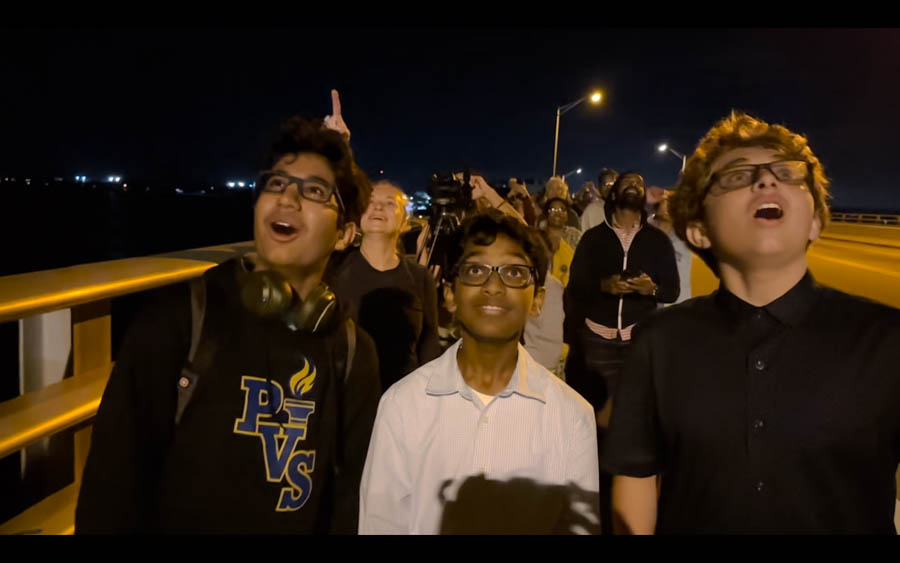
For the boys, SSEP has given them more confidence in their abilities and more ambition to chase their dreams. “This project has built more confidence in myself and my capability to do big things; it’s a truly amazing and quite rare experience,” says Yellu. After the experiment is completed, the team will write a research paper on their findings, a paper that will be cited by professional scientists in the future, showing how the program not only gives students the ability to learn more about space and science but also take control of their future by working on issues that will be prevalent for the next generation. “It's a wonderful thing to be able to work on real science and send a real experiment to the ISS,” says Ratner. “We're going to get real results, and those results could have long-term impacts. It could alleviate water shortages and help push humanity further into space.”




